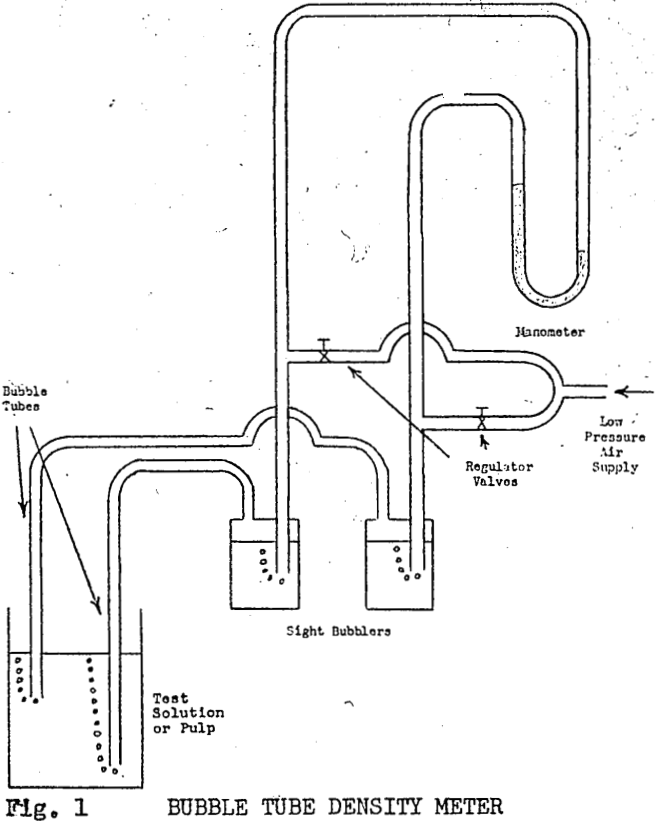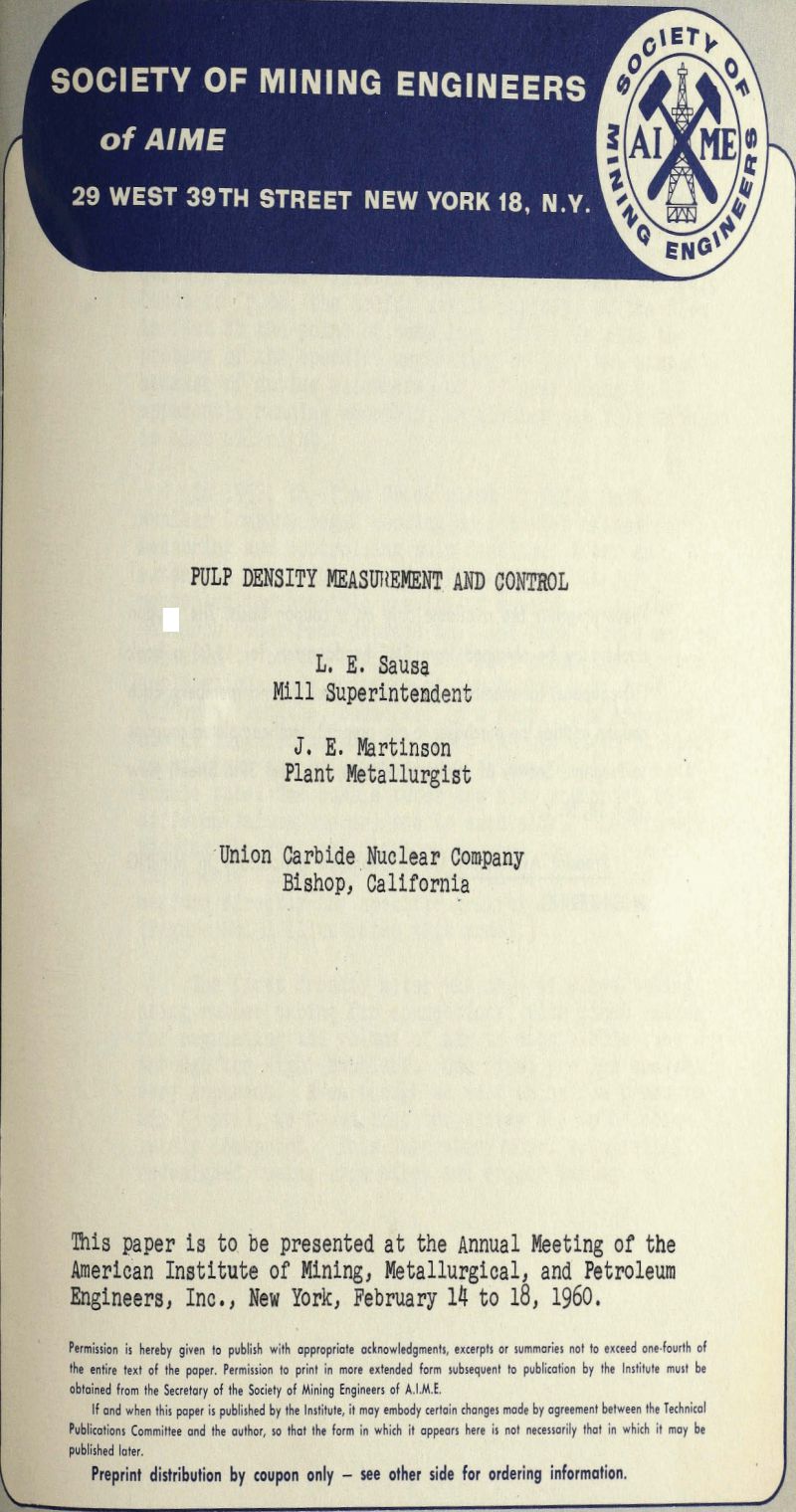Measuring the specific gravity of a pulp in concentrating plants is a relatively simple procedure, but the desired accuracy is often difficult to attain. Many plants use the system of weighing a known volume of the pulp on a scale. In many cases, this method is quite accurate, but obtaining a true sample presents quite & problem.
The first density meter was made of glass tubing using rubber tubing for connections, with pinch valves for regulating the volume of air to each bubble tube through the sight bubblers. Our first problem became very apparent. Even though we were using low pressure air (3 psi), we found that the system had to be absolutely leakproof. This laboratory model was finally redesigned, using iron pipes and copper tubing.
In the laboratory, we found that the density meter gave us reliable results on liquids of various densities and, also, on pulps kept in suspension by small agitators. Our next problem was how to sample a moving pulp. We found that by bleeding off a portion of the flow through a 2-inch pipe, we were able to get a representative sample of the pulp to be measured.
The density meter and sampler were installed in the plant. After 1-½ hours’ operation, the density meter began giving erratic readings. Investigation of the trouble revealed that the bubble tubes were beginning to become coated on the inside with solids.
For control of density in our grinding circuit, we are using similar density meters. The water fed to the classifiers is controlled by pneumatic controllers and valves. We found here, for controlling density, clean air was essential. Until we installed a clean dry air source for our instruments, we would occasionally experience some difficulties with our controllers.
In developing the bubble tube density meter for use in our plant, we have been able to use the experience gained in designing instruments and controls for other circuits of the plant.


